The last few years have seen an explosion in graphic novel adaptations of classic juvenile fiction series, thanks in no small part to Raina Telgemeier's wonderful adaptations of The Babysitter's Club (which has continued with a host of other cartoonists since then.)
The last few years have seen an explosion in graphic novel adaptations of classic juvenile fiction series, thanks in no small part to Raina Telgemeier's wonderful adaptations of The Babysitter's Club (which has continued with a host of other cartoonists since then.) Over the years, I've had the pleasure of interviewing authors and adapters alike. One thing they all share is a love of reading and my interviewees this week are no different.
Colleen AF Venable is the author of Katie the Catsitter (with artist Stephanie Yue,) Kiss Number 8 (with artist Ellen T. Crenshaw,) and a former book designer at First Second. Honie Beam's resume is just getting started as this is their debut work! I'm thrilled to be able to talk about bringing Junie B. Jones to comics, the process of modernization, and the joy of Junie (B!). This was a ton of fun so thank you to Colleen and Honie for sitting with me and Random House Graphic for setting this up!
Of course, no indie newsletter would be complete without a plea for donations from readers like you. Want articles like these delivered straight to your inbox or, dare I say it, early? Sign up for a subscription today! I've got two tiers: free (newsletter access, basically) and the paid one (early access and whatnot.) Just $1.50 a month and you'll be supporting an independent writer.
If you aren't able to, that's OK as well. I'm just happy you're reading and sticking around. Alright, back to your regularly scheduled post.
Colleen, what was your first interaction with Junie B. Jones?
Colleen AF Venable: I believe I was 16. I was babysitting for a couple kids in town and that was just in the stack of books they had. I can’t remember what the first one was. It might have been the one where she was dragging the fish on the leash or it might have been the one where she had the marching band, the one-man band kind-of-thing? But I remember picking it up and being like, this looks funny and reading it to them.
And I was laughing more than they were, cause they had already heard it a bunch of times. I couldn’t read through it aloud because I was laughing so hard. When they went to sleep, I just kept reading and everytime I would go back, I would pick another one off the shelf. I read them all out of order. I have no idea how many I actually read but I was so in love with this character.
That was my introduction: The Powells, or the kids I was babysitting for. Thank you Mrs. Powell for having the books in the house.
Honie Beam: For me, it’s the first book series I remember reading with my parents. I was probably, like, 4, maybe 5; I was kindergarten level so the same age as Junie. I have distinct memories of laughing out loud and my parents laughing, and that was more of the major memory - the bonding experience reading it, which has made it so much more fun to revisit and get to interact with it.
How did Random House approach you both for making this? I’m assuming it might have been Colleen who might have done a pitch, if there was a pitch involved?
CV: There wasn’t! Shaina, who’s one of the longtime editors of Junie B. Jones for, like, 30 years, I did Katie the Catsitter with her and as she got to know me more we’d talked about Junie at different points and how I felt like I was Junie B. One day she asked if I would actually be interested if we could get this to go forward.
I was actually shocked that they would do one because I know the Barbara Park estate - Barbara Park passed away years ago and she’s legendary - they’ve been so careful about there’s no Junie B. Jones action figure, there’s no Junie B. Jones pajamas. It’s not overly-merchandised, which I always really liked. There’s a play and I think there’s a journal, all these things that felt very literary still, so I was shocked they were doing a graphic novel series.
When Shaina approached me, she had already gotten permission from the estate where they were like, OK. It seems like she’ll get it. That was such an honor to be like “OK. She’s going to do honor to this character we love so much.” So yeah, it was just Shaina one day asking me “Oh, would you be interested” and me losing my mind and being very interested.
HB: For me, it was a little different. I had just graduated from college - I think it was, like, two months after graduation - and I had just signed on with my art agent. I was working at a coffee shop and I remember I got the email, it was my agent and she was like, you’re never gonna believe this. I have such a cool opportunity. It was super vague and I was like, I’m down. I don’t know what it is but I’m ready. Then it was a process of doing some test pages and character designs and it was so amazing. An out of this world experience.
What’s it like making your debut with Junie B. Jones?
HB: I don’t even know! It’s so wild and such an amazing opportunity. I’m so incredibly honored to have this as my debut and be working on it anyways. It is a lot of emotions all at once.
CV: And you’re doing an incredible job. I feel like every single panel gets better and better. The expression you get with Junie B., you just get her.
We’re pretty far ahead on the books and I was like, oh my gosh. You’re drawing so well and so fast. Sometimes it’s one of those things where it’s a really fast artist but they just draw talking heads but you’re the opposite of that where it’s like, you’re keeping your deadlines which…I’ve worked in comics a long time and that’s so rare.
HB: [Laughs] Trying!
CV: I was a book designer for ten years for First Second and I was always very quietly keeping track of the six people who ever made their deadlines out of hundreds. Not to be mean to the other people but I love the people that made it.
And then you draw the classroom and there’s all these details and everything has these incredible background posters and easter eggs and I can’t get over how talented you are. This is your debut. Seriously. It’s amazing.
HB: Thank you Colleen. That’s so nice! Yeah, I love the little details in backgrounds. It’s so much fun. And with her expressions, I find myself mocking them so I must look absolutely wild in my studio, alone, posing and stuff.
I do the same thing when I’m writing sometimes.
HB: You gotta act it out a little bit.
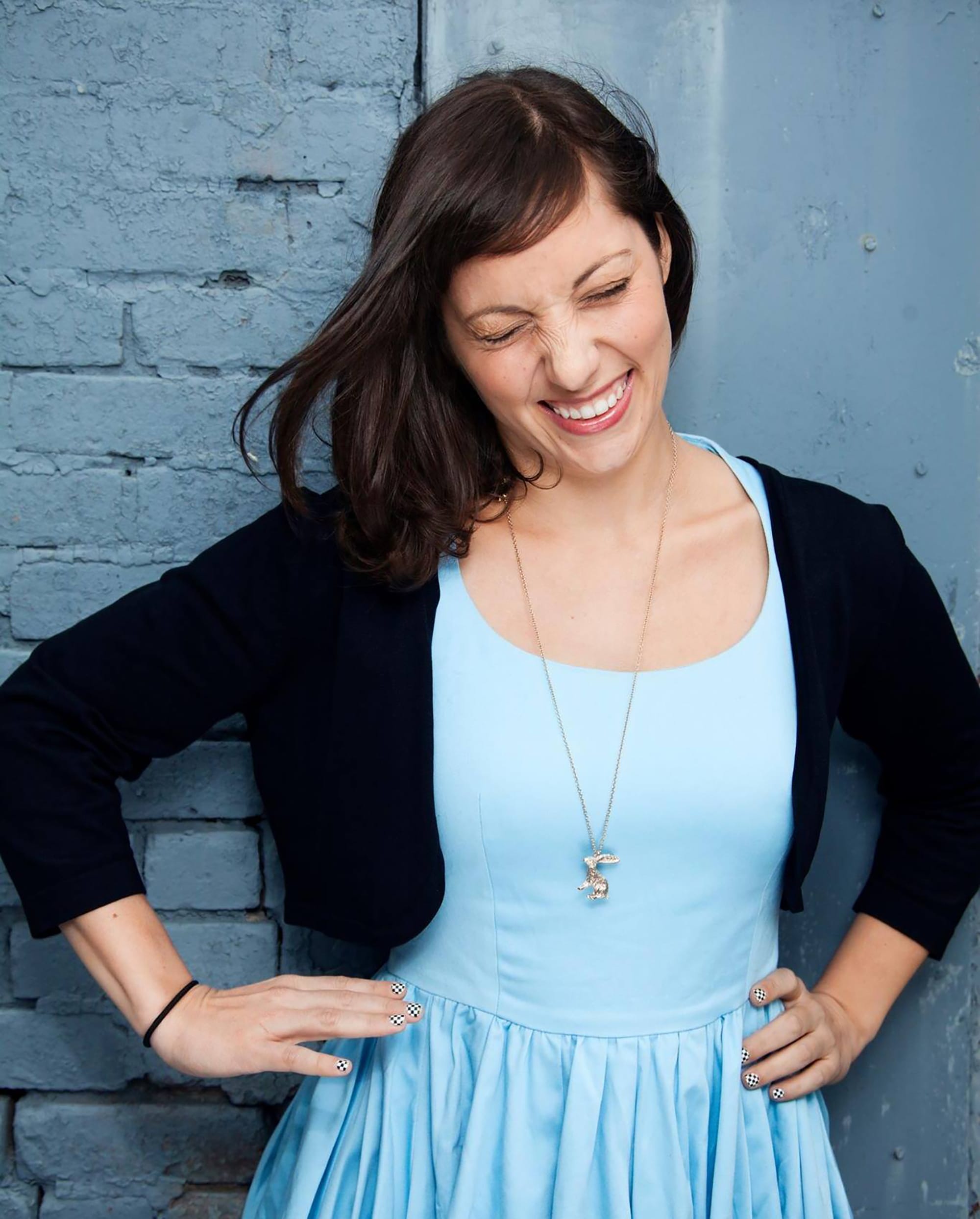
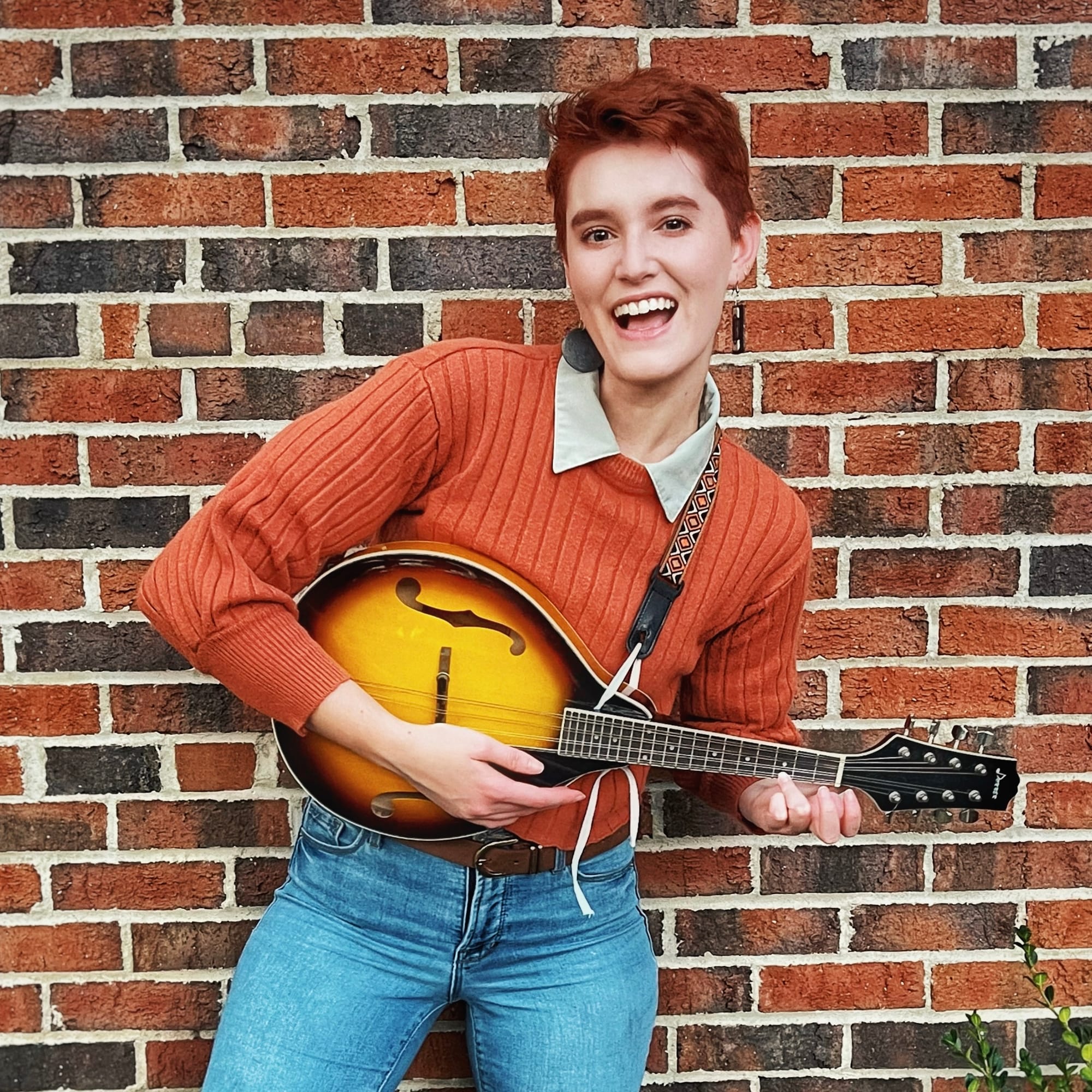
Author photos (Colleen, left, photo by Mindy Tucker, and Honie, right.) I wish I had seen this before the interview so I could've asked about the mandolin. One of my favorite instruments.
Do you find yourself doing it often, not just with Junie B.’s character?
HB: Oh yeah. I feel like I do a one-man play in my room, acting out all the scenes and sometimes recreating props and stuff like that.
CV: Oh my gosh that’s great.
I actually, whenever I’m writing, I panel it out in the air to make sure I’m not doing too many panels. I used to write on the subway on my way to work and I would panel in the air and make sure it would be on the right side of the page for a page turn reveal so I’d always kinda flip my hands in the air. The best part about it was I was usually pretty good about my page turns, got it on the right page, AND no one would sit by me.
Was that the goal?
CV: No but it was an added benefit.
I still do that. I map it out in the air and imagine Honie’s artwork.
HB: We gotta get in a room together. Do a little miming act.
CV: You’ll be miming. I’ll be drawing in the air.
How many books ahead have you worked on? Are you allowed to say?
CV: I’m pretty sure we’re allowed to say.
HB: Yeah.
CV: I just finished writing the first draft of book four.
HB: I’m about to turn in sketches for the third book.
I guess because it’s an adaptation of a very well known series, it’s a little more guaranteed than a debut graphic novel series of its own.
CV: Yeah. It did mean we were working on this for years and we weren’t allowed to tell people. Torture!
HB: It was very hard.
CV: I would be in the bookstore, looking at the Junie B. books and would hope people would tell me they loved it so I would have the YES! Moment. [Laughs.]
HB: [Laughs.] I did the same thing.
What did the process of adaptation look like from a writing and script standpoint and then from the artistic adaptation end? Because I felt like the narration was pulled straight from the books whereas the dialog was modernized and updated in addition to the visuals. Is that true?
CV: It’s actually pretty close to the book. I originally braced myself because I remember loving these books but there’s a lot of things you love as a kid that you look back on as an adult and go “Oh my gosh. How did I every think that was okay?” So I braced myself and expected I would have to change a lot. This was from the early 90s. That was forever ago. And there really wasn’t much to change. I was shocked.
Things we did change, we definitely diversified the adults but the kids were already incredibly diverse and wonderful. I didn’t take out the “hates” and the “stupids” because that’s part of Junie B. but I did add in some notes like “I said two words I wasn’t supposed to say: I hate this stupid, smelly bus.” Referencing she knows it’s not okay to say these things because a modern kid wouldn’t say “stupid.” They wouldn’t say “hate.” Those are banned words in a lot of schools but we wanted to keep it as true to what a kid is like and they’re gonna say these words. They’re gonna have these big emotions.
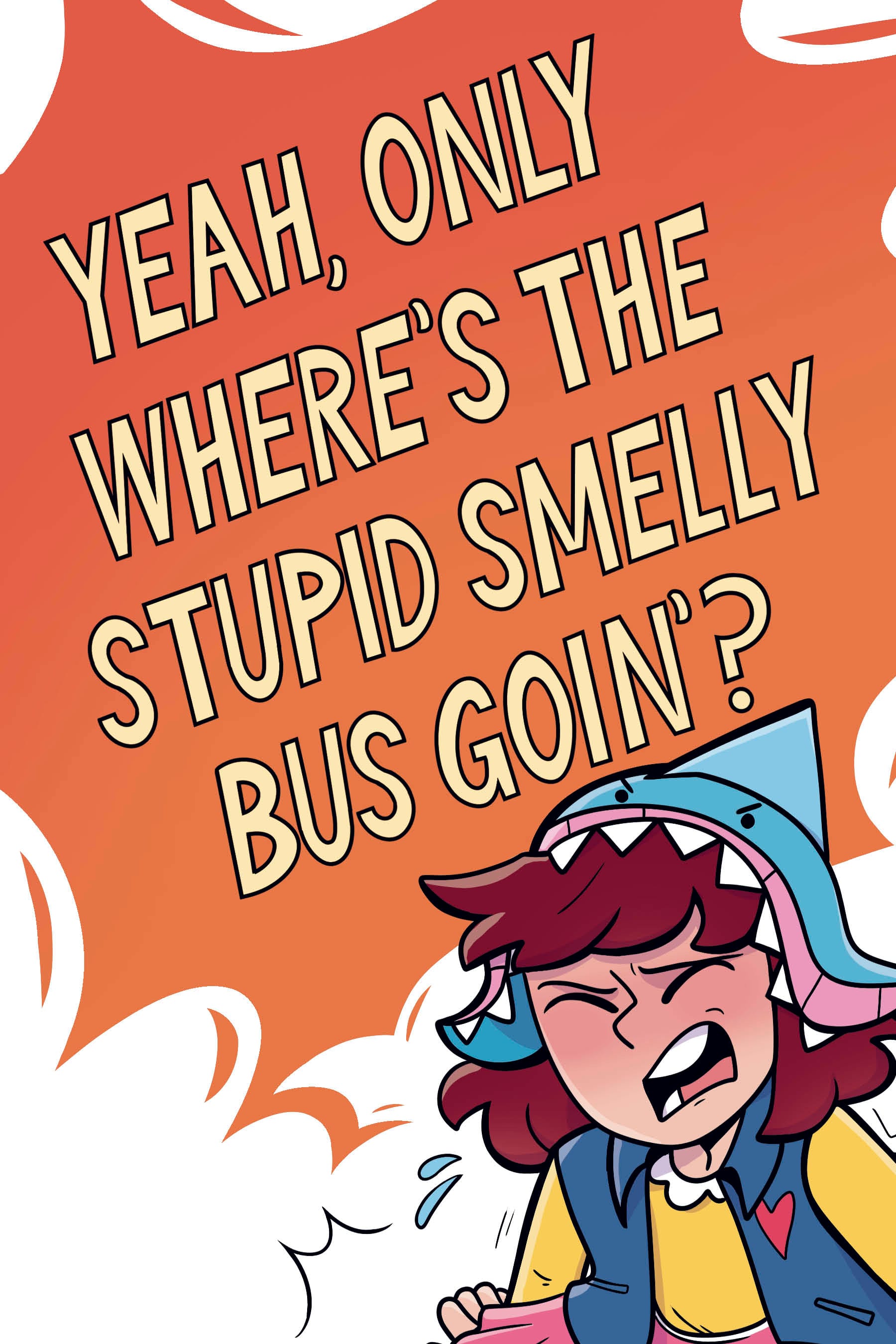
I feel like the big changes were just the teacher was not white but she was technically black & white in the first book and I don’t think she made it to the cover ever so we’re not sure!
Just changing up the administration - they were all male before - and making sure the dad has a bigger role so it’s not always mom doing everything. But again, that was just as much putting him in the artwork. They’re having this conversation, he’s there. He might have been there in the original but it was “mom was talking.”
HB: Yeah. You brought up a bunch of the things I was going to say. A lot of the characters stayed the same, for the students. For me, a lot of the modernization is about what do classrooms have now that they might not have had then. So instead of a blackboard there’s a smartboard or just a regular whiteboard. I remember we talked to actual Kindergarten teachers to find out if it looked right, what am I missing? I haven’t been in Kindergarten for a very long time so I don’t know.
I think you brought up adding the dad or adding characters you don’t really see but would play a big role in her life like, even Tickle the dog gets a lot of cameos now. I love drawing Tickle in the background of the panels. Things like that where we’re adding a little more rather than changing, at least on the art end.
CV: And of course, Junie B.’s obsessed with one chair in the classroom and in modern day classrooms, a Junie B. Jones would be obsessed with the wobble chair. You know, the one you can sit on but can’t actually fall? So that’s what we did and she finally gets to sit in it and it’s a great sequence of her just wobbling away.
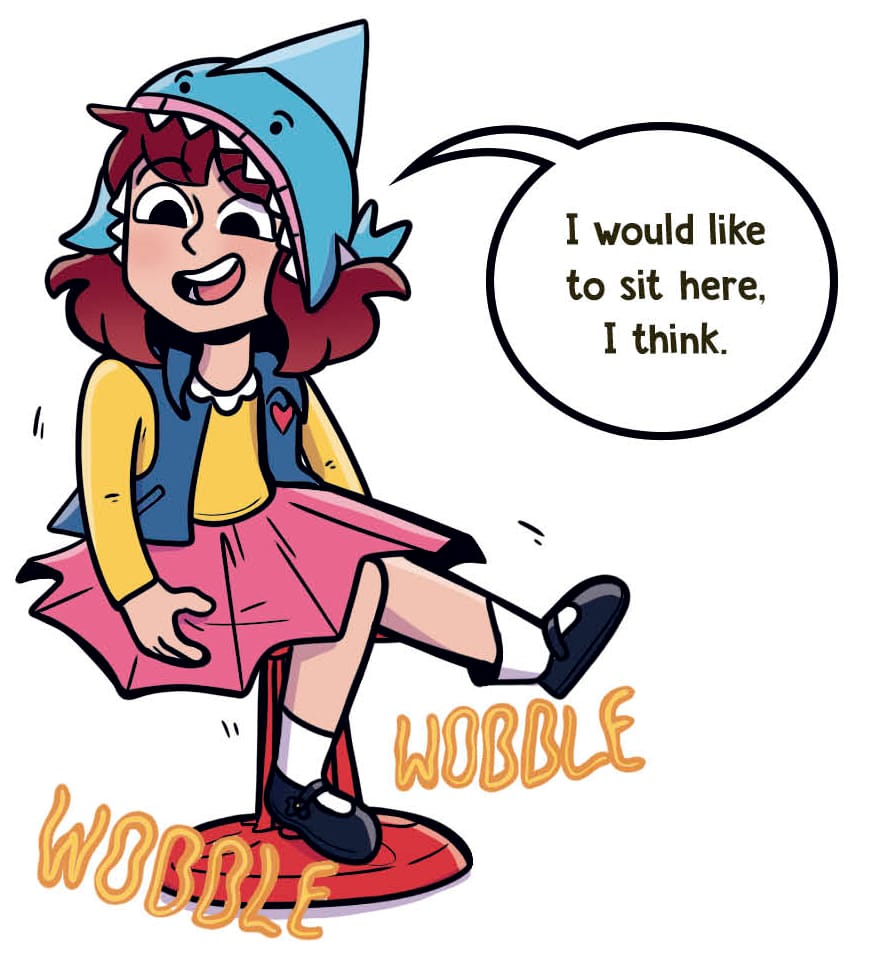
HB: I’d never heard of a wobble chair and I got a ton of reference images and I was like, oh my gosh, I would have loved this.
I didn’t realize they had all these different kinds of chairs in Kindergartens.
CV: Right? THe first time I sat in a wobble chair I didn’t know it was a wobble chair and I almost cried because I thought I was going to die. I screamed.
HB: There’s another scene that got taken away, and Colleen, I think you were part of this process too. Nap time isn’t a thing anymore in Kindergarten.
CV: Yes!
Really?
HB: And we had a scene where we had them all cutely sitting on mats and sleeping and we were like, oh. Oh no. So then it became a recess scene.
CV: Also, it’s not a half-day Kindergarten anymore, it’s almost a full-day now. Because before she was talking about the morning session and the afternoon session but no, because so many people use it as their child care too, it has to be…you know…back in the 90s, I guess a lot of stay-at-home moms existed and I’m glad that’s not the case anymore. I’m glad that both parents get to do what they want to do but, it does mean, it changed that little element in the books.
These are the kinds of things you don’t really think about until you dig in. You’re like, Oh. You know? Kindergarten. That’s always been the same, right?
HB: Yeah!
CV: Exactly.
Water fountains. They never change.

Stepping back from the book for a second, Colleen, you said you had done ten years as an art director at First Second. How has that experience informed the way you’ve ended up adapting this, the way you created your script?
CV: I think what I learned looking at so many graphic novels and reading so many graphic novels as I was designing them was that the most powerful panels were always the ones without words. As a writer, it’s always the inclination to put lots of words everywhere so I feel like whenever I finish a draft, I got back and take out a lot and have it be reaction shots of Junie B., of the great expressions Honie is giving Junie B. They’re so much funnier than anything I could write, so I tend to make room for that. To make space for the visual gags.
I think it’s just my education from learning, from reading tons and tons of books. I try not to give…some people are like, you must be so harsh when it comes to looking at the art and I’m like, are you kidding me? It’s magic. It just comes and I’m so excited. They have to be like, “you need to make notes, Colleen” and I’m like “Okay okay okay!”
I just love the collaboration process so much. That’s the big thing. Knowing when to step back a little and let the art breathe.
And there are so many great moments with the art. I love the big two page spreads where it’s just the captions. It’s so great. There’s so much life in there. Honie, did you do the coloring at the lettering as well?
HB: I did the lettering but we have another artist, Kiwi Bird, doing the coloring.
What was it like working with Kiwi on the colors?
HB: Honestly, Kiwi did such a phenomenal job. I could never. Sometimes she does stuff and I’m like, I don’t even know if I would have thought to color this like this. She bring so much life to the art and it’s very out-of-body to see my own art colored by someone else - in a fantastic way! It’s so cool.
Going back to Colleen, when you send stuff in the script, you’re so good at comedic timing for some of these panels. Going back to the idea of it breathing, I don’t know if I would have ever thought to do it myself. Fantastic scripting.
CV: Aww. My thing too is, I panel out the script because I want to be like, I want a long panel and then I want three quick beats, like really fast. But I’m a big believer in this being a general guide and any artist, anytime you want to expand things or there’s been a bunch of times when you’ve made these really cool…Junie B.’s standing and there’s all these things floating around her that she’s talking about. I feel like you add so much.
There has to be that collaboration where, here’s the comedic beats, you run with it for the visuals.
HB: It’s definitely a very good collaborative project between all three of us I feel like.
Do you have any specific scenes where that process happened?
CV: Maybe at the beginning where she’s talking about what she likes? Cause that was an addition. We actually took part from the Junie B. Jones Journal and we wanted to be a little more of an introduction to Junie B., even bigger than there was in the actual book, so we added a section where she talked about her likes and dislikes and Honie drew little icons of all the different things.
Such a great sequence.
CV: Yeah! They’re such funny things. She loves the thing that floats up-and-down in the back of the back of the toilet?
HB: List of things I never thought I’d be drawing.
CV: And it’s on, like, the second page of the book.
HB: That’s a great example of the script where I got that addition and it was “add word balloons” and I thought, oh, it’d be so fun if they were in a little rainbow. I feel like that’s very big, a big opener for Junie B.
Sadly for me, my ARC-
HB: It’s black & white!
CV: Nooooooo.
-is black and white with a little color teaser at the front. So at least I got to see the rainbow.
HB: You got a hint of it.
CV: Exactly.
Yeah. One of the downsides of that.
HB: That’s something to look forward to.
Exactly!
CV: Or you could color it in yourself.
HB: Oh yeah! DIY.
I don’t have that kind of talent [laughs.]

For the lettering, as you were working on it, what was your approach to integrating it into the page? One example that really stood out to me was the bus first arriving, you really feel the menace of the bus.
HB: That’s a really great question. First off, Colleen does really fun SFX to play around with. They’re really non-typical. Like, in that scene it’s the screeching of the bus but sometimes I’m like, that’s just an action but it’s a sound now? And that’s so fun. I have to figure out how that works.
I took a single hand-letttering class in college with Lisa Peron. I think it changed my life. I learned a lot from her. I use a lot from that to build into this.
I approach hand-lettering in the sense that it’s a character as well. In the scene with the school bus, I wanted it to feel like a tense moment so it’s going through and trying to think how that sound would have that kind of character design. I don’t know if that made sense but it made sense in my head though.
So this was hand-lettered?
HB: It was hand-lettered, yeah. All of the SFX are.
But the dialog was typed out?
HB: Yes. It’s a typeface.
CV: There’s a lot of hand-lettering though, as you look through. There’re so many sound effects.
HB: There’s a scene, I think it’s in the first book, where she stomps and screams and I got to hand-letter that page too. Anytime there’s that blocky text, is all hand-lettering. Otherwise the dialog is a really nice font.
CV: Every time she has a complete breakdown [laughs.] Breakdown equals hand-lettering.
Did you enjoy doing the hand-lettering?
HB: Yes! At first, it’s every intimidating but I’ve grown to really, really enjoy the hand-lettering panels. It’s one of my favorite things to do. You can just sit down and get lost in doing it.
This is for both of you. What did you hope to draw out of Junie B. into the book?
CV: I mean, just that energy. She describes doing funny things but you don’t see it in the book. A lot of times she’ll talk about a little flashback. I was just working on one for “Sneaky Peaky Spying” and there’s a part where she jumps out of a hamper and scares her grandfather until his dentures fall on the floor. And it’s just a little throwaway, it’s just one line, but we got to make it into a two-page spread of her terrifying her grandpa! Her, like, in the hamper carefully putting socks on her head.
Trying to get that chaos cause there’s so much where the book has these throwaway lines but we have the ability to show them. The books went from about 65 pages to 160 and we have the ability to have these chaotic moments have their moment to shine. So I guess trying to get her energy on the page and staying true to the character, staying true to the kids who grew up loving Junie B. that now have kids. have them read them with their kids and still have them feel like it is the same heart and soul of these books.
HB: I agree. A lot of the energy but also the relatability. Almost everyone I know who has read Junie B. has said, “I relate to her.” Or “I was just like her!” or “I had these moments.” So it’s about bringing in these moments. I know in the second book there’s a scene where Tickle is tearing apart a toy in the background and it’s adding that where you don’t get to see that in a written book. So adding that visual into the background and bringing in the “oh, my dog does that!” is super fun. Just to create an entire environment, and world almost with her, but still staying true to her and her humor and her Junie B.-ness.
CV: I love the scene in the second book too where her parents are putting up wallpaper and her mother is very good at it and her dad is very bad at it. That’s not in the original book, it’s just “her parents are putting up wallpaper,” but we had this visual of him constantly being stuck to pieces of it. It was just ways to be like, what does the rest of her world, beyond these text lines, look like? It’s a really fun creative experiment to try to think of what the rest of her world looked like.

Did you ever feel like you had to contrast what she’s saying with what the world is? Like, was there those tensions you had to address or was it just, let’s go? Her world is just like how she thinks. Cause, you’ll be standing there and kids will come over and tell a story and you were there and you’re like, that’s not what happened.
HB: I feel like there’s those moments when she’s got a thought bubble almost, where she’s saying something outrageous and her thought-bubble shows it in a more kid-drawing way that’s obviously fantasy. It kind of breaks that wall of her imaginations but it’s still her world. We’re all living in Junie B.’s world.
CV: [Laughs.]
What do you think kids should take away from this adaptation? Other than, we should read this series and the original.
CV: I mean, I feel like kids don’t know Junie B. as much as I thought they would. If you go back 5 years, the parents that read it as kids were, you know, it’s this weird every-other generation knows about it kind of thing. I mean, there’s still a whole section at every bookstore, like two feet of Junie B. Jones everywhere.
They fly off the library shelves.
CV: I just think it’s so right for these kids who have been devouring graphic novels to meet the character who has such a…normally, you start a series and you’re like, oh, I like this character, this is fun, but those kids who are super into it have the ability to read almost thirty books right away! Why wouldn’t you give kids that ability?
And I do think the graphic novels are different. There’s a lot of reading both, I think it could make for some interesting classroom discussions of the difference. I’m just hoping to find those new readers, the kids who’ve never read a prose book and have them fall in love with this character and devour every single book that exists.
HB: I agree. I feel like I’m very similar. I want that bond you get between a parent who read the book as a kid and they remember it fondly and then bringing in a new generation, like, you can read it too. I feel like that’s so unique and so fun. My goal is always to have laughter too, to make kids laugh. I love humor in everything I do and I’d feel like “success!” if I do.
And it is funny. It’s so funny.
CV: “Her nail polish, the color of spit.” That line makes me laugh every time. It’s so gross!
Wearing her Pat and Leathers.
CV: Yep! Her Pat and Leathers that she licked clean and you’re like, did she really or is she just saying that? We did not show that. We didn’t feel like we needed to show that.
HB: It’s left up to the imagination.
To close us out, what are some of your personal Junie B. likes and dislikes?
CV: Likes: Rollerskating, Canolis, Petting every animal in the world
Dislikes: Balloon Animal Squeaks, Rocks in my shoes Meanie Jims (and other varieties of Mean People.)
HB: Likes: Lemons, Owl themed knickknacks, Miniature plastic dinosaurs hidden around my house.
Dislikes: Mustard, Clocks that tick tick tick, Elevators that shake when they stop.
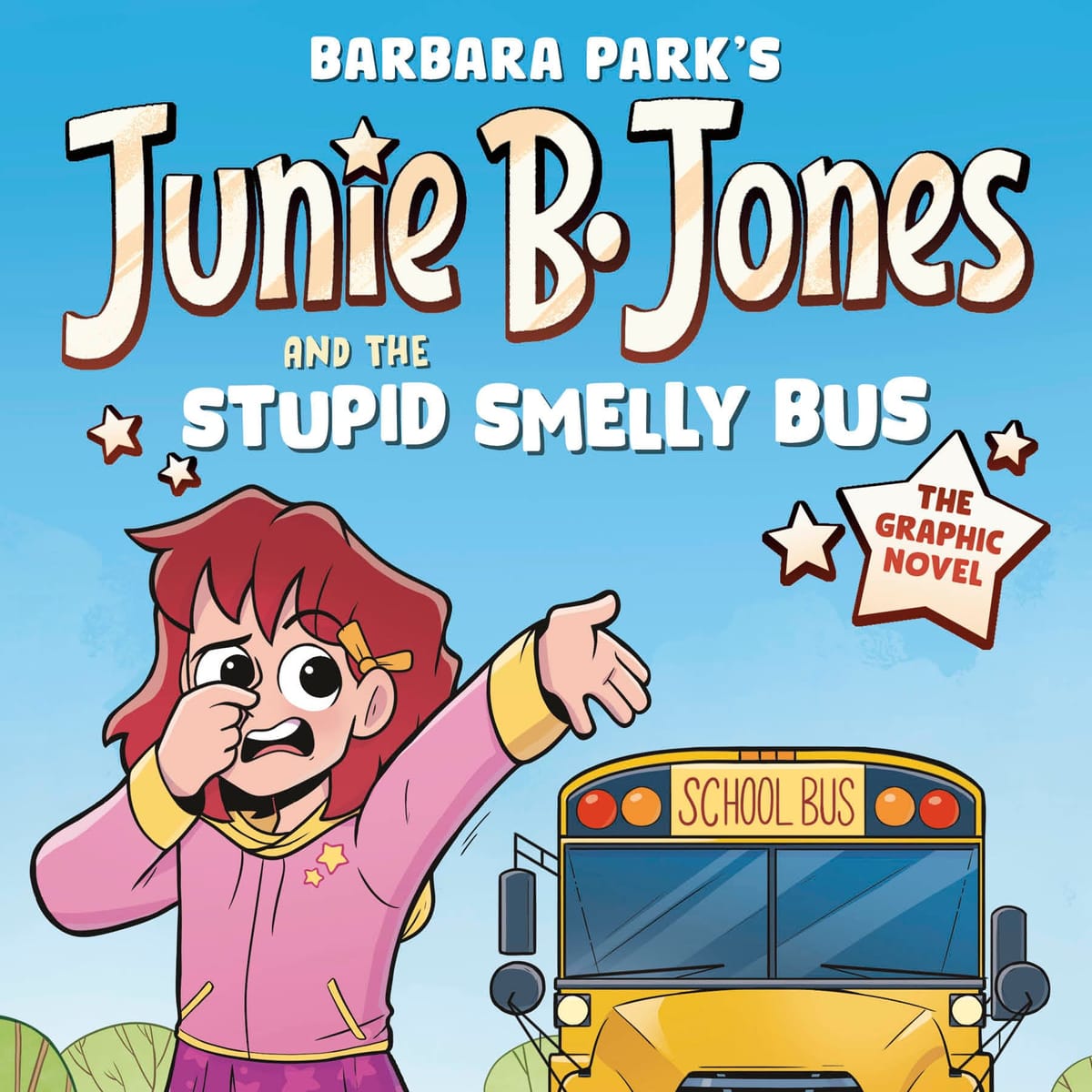
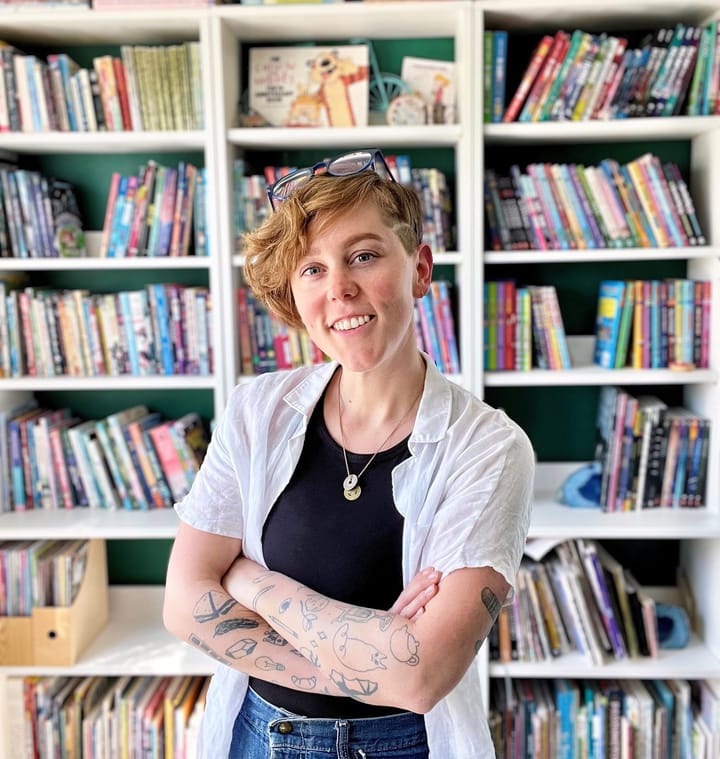

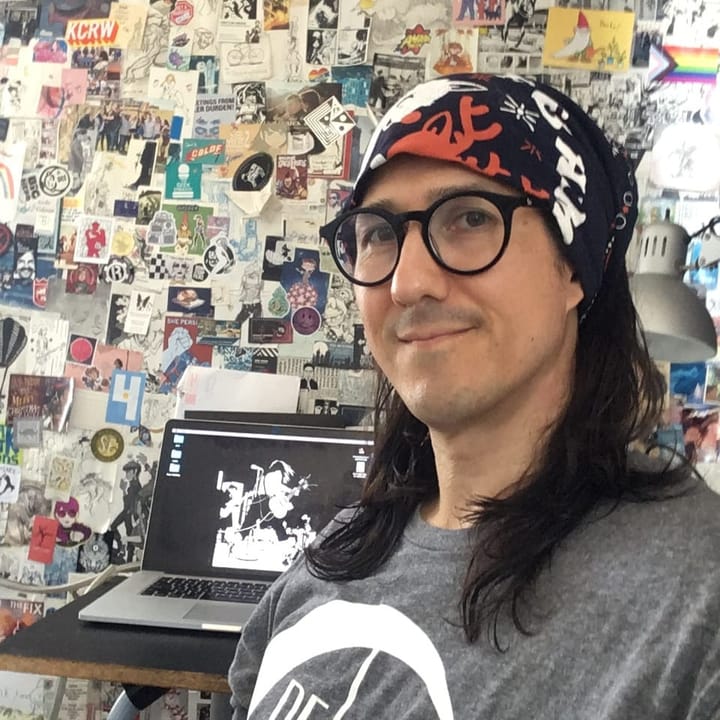
Comments ()